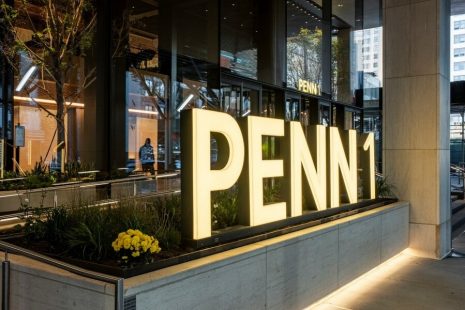The Smart Building journey at Cisco Penn One

Cisco’s flagship Manhattan building, Penn One, was completed earlier in 2022, integrating groundbreaking smart building technology across the facility.
The project had been in development for 3 years with the goal of rethinking the traditional office environment into a more flexible, data-driven space. The plans had always envisioned a more dynamic hybrid approach to work, but the onset of the pandemic underlined the importance of this change. Traditional real estate thinking is inflexible and there is typically a lack intelligence about the ways spaces are actually used: a set number of square foot is allocated per employee which assumes a certain number of desks, network connections and other amenities. It’s expected that the majority of those employees will be in every day for the same hours, doing the same tasks. In a truly hybrid working environment, people may come to the office often or not at all, to work alone or to collaborate, completely unpredictably. For the infrastructure to be able to cope with this range of possibilities, detailed intelligence is essential.
To ensure they would have the breadth and depth of data needed, Cisco developed Penn One with a technology-first strategy, looking at how their smart building system could help them meet their key goals of flexibility, sustainability and health. IoT sensors report constantly on a range of metrics including occupancy, temperature and air quality, enabling facilities teams and occupants to get a comprehensive picture of the status of their spaces.
The system was developed and implemented in collaboration with several of their ecosystem partners, including Molex CoreSync lighting control.
CoreSync lighting control
Integrating lighting control into a smart building system enables light to be managed and delivered in a way that’s intelligent – saving energy, reducing costs, and ensuring occupants get the maximum benefit from natural daylight wherever possible. The effect of the brightness and tone of lighting has a proven effect on the wellbeing and productivity of occupants.
In addition, occupancy information from CoreSync fixtures formed an essential part of the data package used by the Penn One smart building system, helping inform other decisions and automations.
Smart infrastructure for smart buildings
As a pioneer in the PoE space, it’s no surprise that Cisco chose to implement a PoE-based solution. Delivering DC power, PoE is a natural fit for low-voltage IoT sensors. However the latest high-power standards enable PoE to deliver up to 90 watts of power, opening up a range of options that would not typically be thought of in the IT space – for example powering window blinds, multiple downlighters, and even height-adjustable desks. By putting everything onto a single Power over Ethernet infrastructure, it also enabled Cisco to gain valuable, detailed insight into the functioning of the network itself.
Explore the Cisco’s real estate data journey
Penn One is the first in a series of facilities that Cisco is looking to digitize. Over the coming months Cisco will be releasing a series of content pieces discussing their data journey at each location.
The Making of Penn One video showcases the vision behind the project alongside its stunning new interiors.
For a more detailed dive into the goals and technology behind Penn One, join Molex’s Director of Product Management for CoreSync, Giovanni Frezza, and Bob Cicero, Americas Smart Building Lead at Cisco, on this on-demand webinar recorded earlier this month.
You can also listen to experts from Molex, Mecho and other collaborators on the Cisco Insider Series Podcast.
